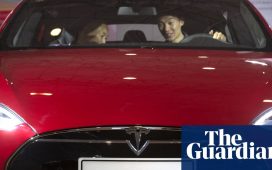GM sounds like it’s not going to budge regarding its decision to replace Apple CarPlay and Android Auto with its in-house infotainment system on its future electric vehicles. The only difference is that it’s making it about safety this time.
Around eight months ago, as reported by Reuters, GM decided it would replace Apple CarPlay and Android Auto with its own built-in infotainment system that will be developed in collaboration with Google. It chose the 2024 Chevrolet Blazer as the flagship car for its new system.
The decision to do so obviously resulted in public backlash. Consumers are way too accustomed to Apple CarPlay to change to an entirely new interface. This change would mean consumers can no longer mirror their phones to their car’s display. Instead, they’d have to manually upload an entire database to their car’s infotainment system, which is a bit of an ask.
GM continued to try selling its decision for a few months, trying its best to show consumers how its new system would be as compelling as CarPlay. Though people didn’t really buy it, it seemed confident about their plans, anyway.
In a statement that Tim Babbitt, GM’s head of product for infotainment, gave to MotorTrend at a press event for the new Chevrolet Blazer EV, he said that CarPlay and Android Auto have “stability issues that manifest themselves as bad connections, poor rendering, slow responses, and dropped connections.” He also added that these issues require drivers to pick up their phones every few minutes, which could lead to distracted driving.
GM believes it’s safer for drivers to feed its built-in infotainment system with the apps they’d need to use and control everything from the car instead of using their phones.
After the MotorTrend story and Babbitt’s statement received attention, GM reached out to multiple publications trying to tone down its departure from Apple. This time, it said, “GM’s embedded infotainment strategy is driven by the benefits of having a system that allows for greater integration with the larger GM ecosystem and vehicles.”
In other words, they want data. They’re tempted by the prospects of getting their hands on everything that they’ve been letting third-party companies access up until now.
In fact, in an interview with Reuters a few months ago, Edward Kummer, GM’s chief digital officer, admitted to this by saying that they believe the subscription revenue is a good earning opportunity for them. Reuters also disclosed that GM Chief Executive Mary Barra is looking at somewhere between $20 billion and $25 billion in annual revenue from subscriptions by 2030.











